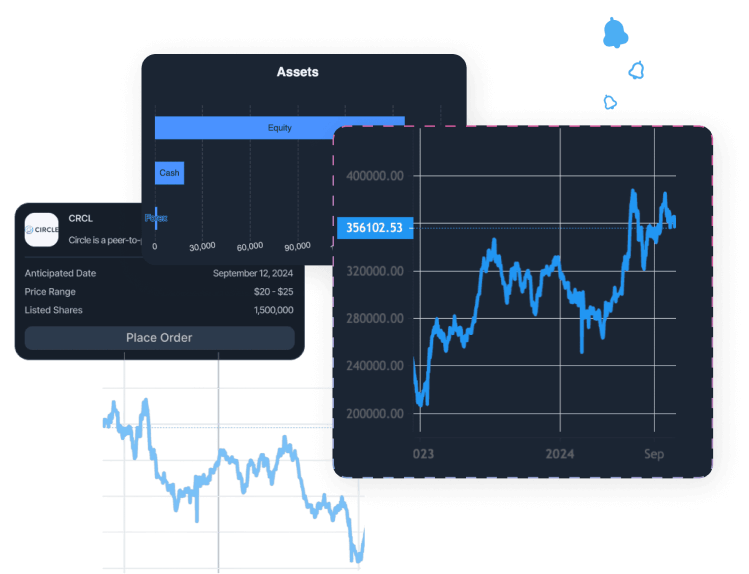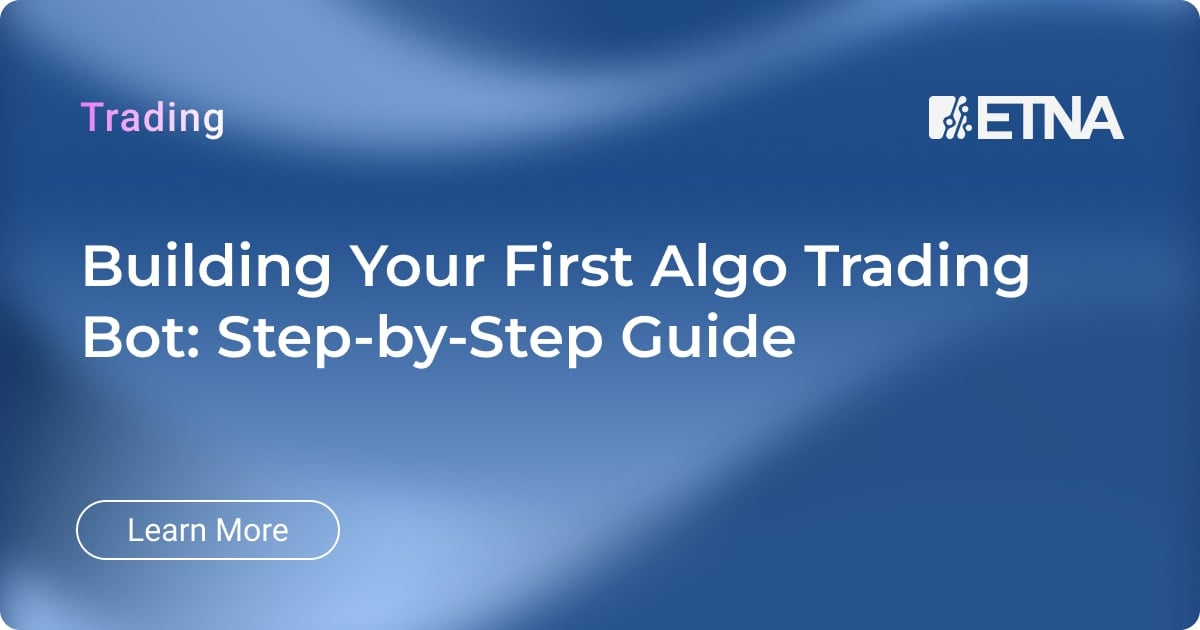
In a world where milliseconds mean millions, algorithmic trading has reshaped modern markets. In 2025, algorithmic trading programming has become the cornerstone of competitive brokerage operations and individual trader empowerment. Whether you are a brokerage looking to enable automated trading or a fintech developer exploring AI in financial markets, this guide will walk you through the principles, best practices, and hands-on steps to program your first trading bot powered by platforms like ETNA Trading.
Algorithmic trading programming automates trade decisions and order execution using computer-coded strategies. By removing emotional biases and executing trades at machine speed, algorithms provide precision, scalability, and consistency transforming how both brokerages and investors operate.
Manual traders may track a few instruments. Automated bots can scan thousands in real time. An algorithm evaluates data, generates buy/sell signals, and executes orders instantly across markets. The result? Better efficiency, reduced errors, and around-the-clock operation qualities that have made algorithmic systems a mainstay of institutional and retail trading.
The global algorithmic trading market is valued at about $23.5 billion in 2025, projected to surge beyond $42.9 billion by 2030, representing a 12.9% CAGR. Nearly 70% of U.S. equity trades now rely on algorithms, according to Grand View Research and Coherent Market Insights. Advanced AI and ML models allow traders to automate data interpretation, detect market patterns, and optimize risk management in real time.
Institutions dominate usage, but retail algo trading participation has tripled over the last decade, thanks to accessible platforms and APIs. Cloud deployment and AI-driven decisioning are top growth drivers in 2025.
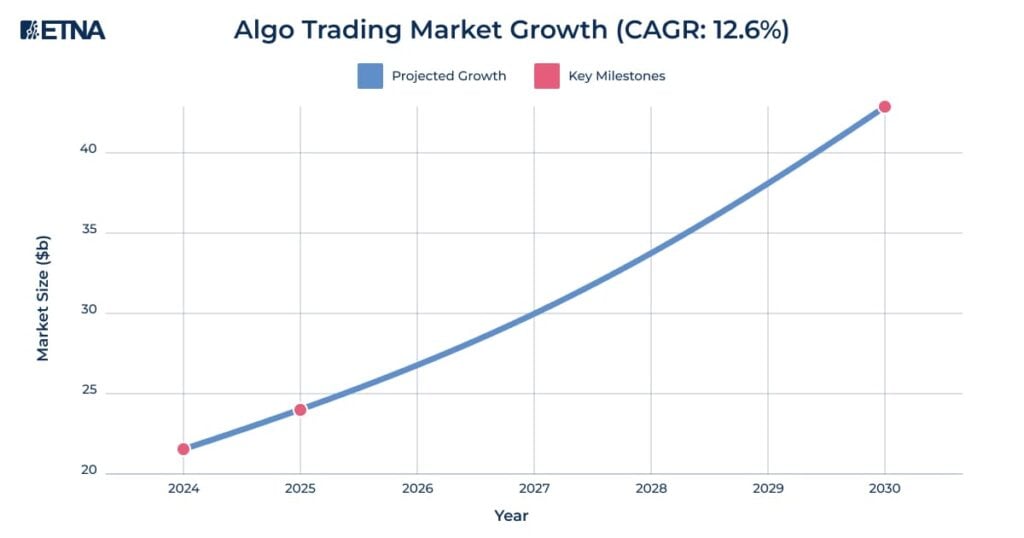
Global Algorithmic Trading Market Growth (2024-2030)
Selecting the language for your trading bot defines its speed, flexibility, and scalability.
Dominant among new developers and quants, Python blends readability, massive library support (Pandas, NumPy, Backtrader), and flexible API integration. Perfect for prototyping and backtesting.
C++ drives high-frequency trading (HFT) engines within investment banks due to near-hardware control and ultra-low latency.
An emerging favorite for developers needing safety without speed compromise. Its compile-time checks prevent typical run-time errors.
Popular for large financial institutions that require scale and stability across complex infrastructures.
This 5-step process is adapted from ETNA’s industry-aligned development framework to show brokerages and developers how to build reliable automated systems.
Start by identifying the instrument class stocks, forex, crypto and your hypothesis (e.g., momentum, mean reversion, statistical arbitrage). Keep logic rule-based and measurable.
Install coding frameworks and data libraries.
Python setup example:
python
pip install pandas numpy matplotlib backtrader yfinanceUse ETNA’s developer-friendly APIs for market access and testing to simplify integrations.
Data quality defines success. Connect to real-time data feeds, clean and standardize them, and backtest thoroughly. Use ETNA’s Paper Trading Simulator for early trials.
Translate your strategy into conditional logic buy/sell triggers, stop-loss, and position sizing. Backtest across various time periods, including transaction fees, and verify results statistically.
When ready, link your bot via ETNA’s Stock Trading API or WebSocket connection for paper trading before going live. Ensure compliance by logging every order and transaction.
python
import requests
# Example pseudo-endpoint
track_order = requests.get("https://api.etnasoft.com/v2/orders/open")A typical bot framework includes these four components:
This modular structure ensures your bot can evolve from prototype to enterprise-grade system without rewriting its foundation.
AI has transcended analysis it actively trades.
Brokerages deploying AI tools alongside coded algorithms see up to 40% improvement in execution accuracy and 20% faster signal response.
Libraries:
Data Sources:
Backtesting Tools:
Brokerage APIs:
Platforms like ETNA Trading, Interactive Brokers, and Alpaca allow for real-time data integration, order routing, account management, and compliance logging.
ETNA Trading is a white-label, API-driven platform designed for modern brokerages and fintech firms.
Key Highlights:
Developers can use ETNA’s Stock Trading API for strategy automation while maintaining regulatory and security alignment.
How much coding do I need to know?
Basic Python knowledge is plenty for starting. Libraries and community resources make learning accessible.
Can I algorithmically trade without code?
Yes, but customization is limited. Low-code tools mask logic but limit scalability and sophistication.
Is algo trading profitable?
Profits depend on risk management, execution quality, and strategy discipline. The best-performing systems adjust to volatility dynamically.
Mastering algo trading programming empowers traders and brokerages to innovate quickly. By combining structured trading coding methods, AI-driven analytics, and reliable broker APIs like ETNA’s, you turn market complexity into opportunity.
The path from manual trading to algorithmic precision begins with one clean, systematic line of code.

Demo Financial Advisor Software
Manage portfolios with advanced rebalancing and real-time insights.
Access customizable client reports and streamlined compliance tools.
Designed for advisors seeking efficient client and portfolio management.

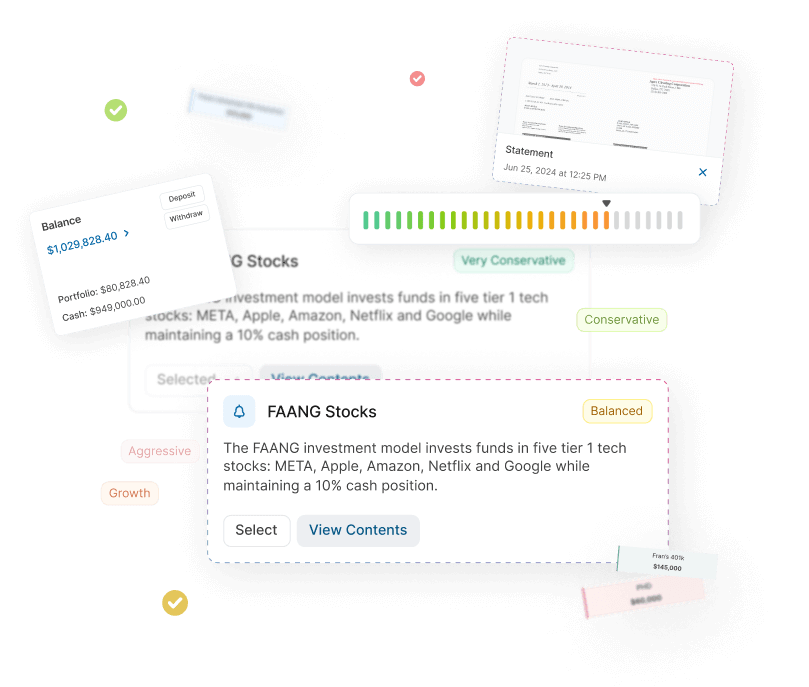
Demo Advanced Trading Platform
Test multi-asset strategies with real-time and historical data.
Analyze market depth, execute complex options, and algorithmic orders.
Ideal for refining strategies and risk management before live trading.

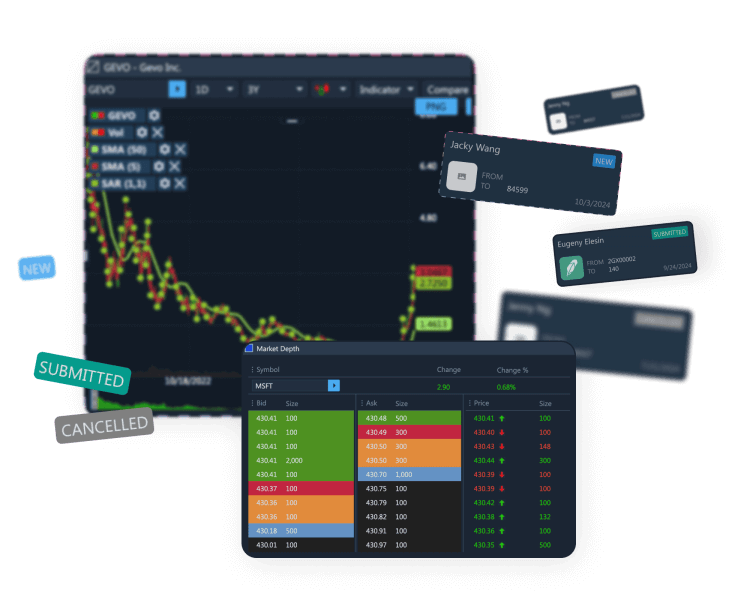
Demo Paper Trading Platform
Practice trading with virtual funds in real market conditions.
Simulate cash, margin, and day-trader accounts to gain experience.
Perfect for honing skills in a risk-free, customizable environment.

